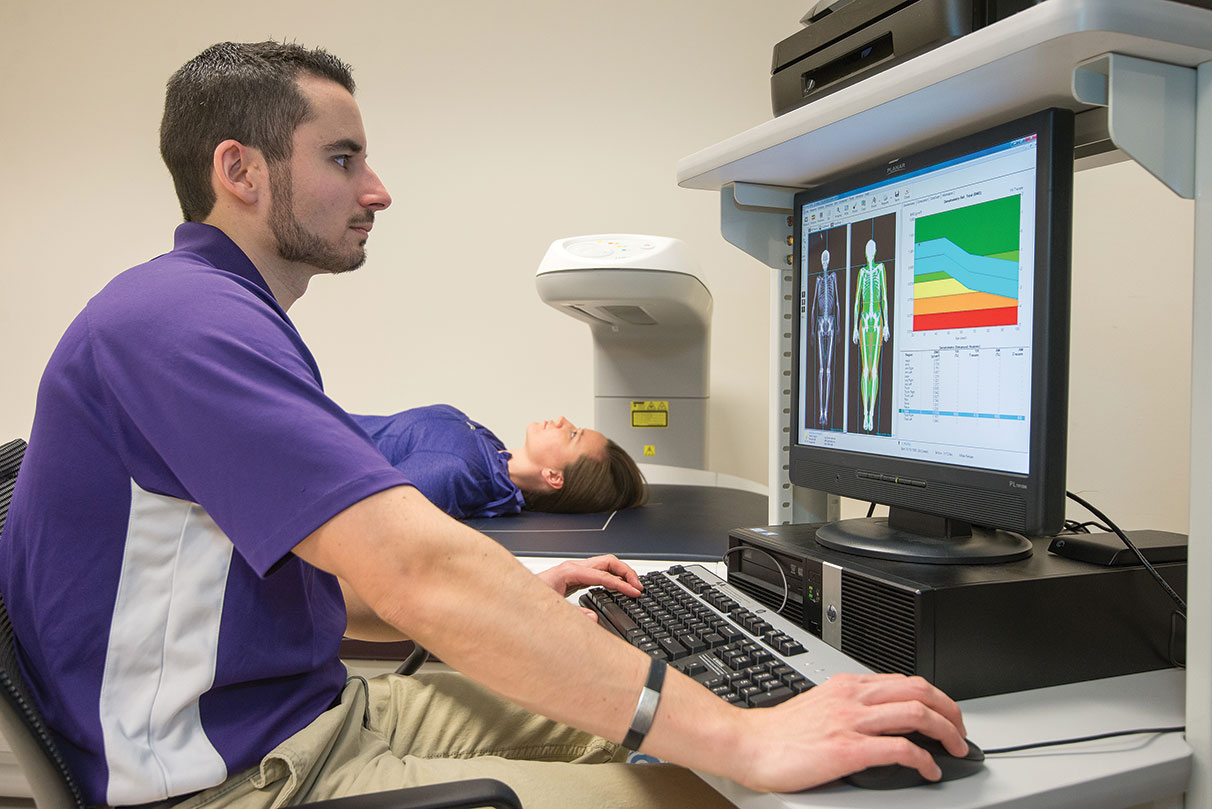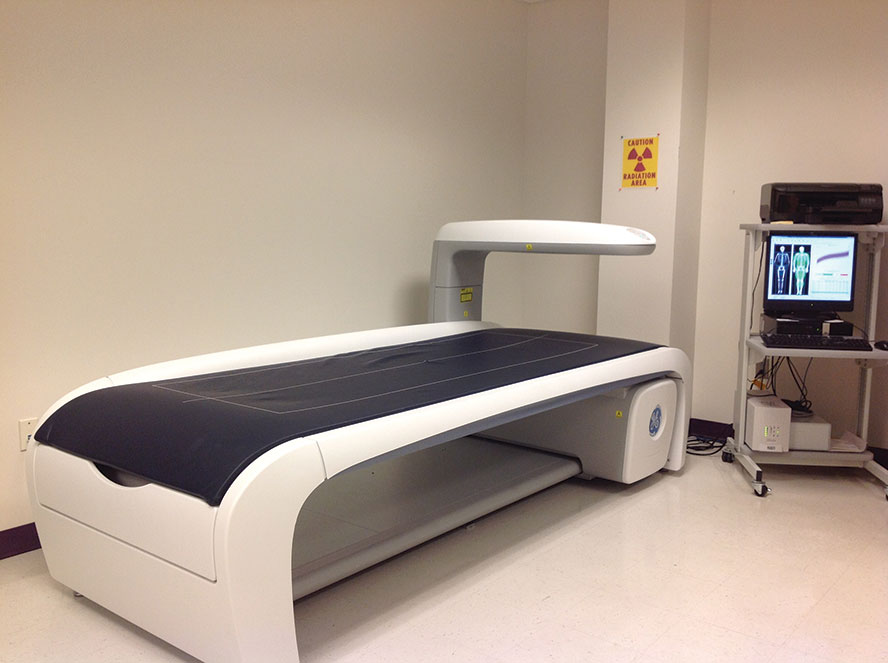Kinesiology’s DEXA machine x-ray visionary
DEXA machine is a powerful new tool for Department of Kinesiology.

The new DEXA machine can deliver a variety of body measurements from a 10-minute scan. (Photography by Glen E. Ellman)
Kinesiology’s DEXA machine x-ray visionary
DEXA machine is a powerful new tool for Department of Kinesiology.
Getting an accurate measurement of body fat used to require confusing calipers and impractical water-submersion techniques, but the kinesiology department’s new dual energy X-ray absorptiometry machine (or DEXA, for short) delivers accurate results through a 10-minute body scan.
The machine came to campus last year thanks to departmental funding and a gift from Dr. Steve and Margaret Benz, the parents of TCU alumnus Adam Benz ’10.
“The purpose of acquiring the DEXA device was to use it for three purposes: teaching, research and service and that’s what we’ve done,” said Joel Mitchell, chair of the Department of Kinesiology.
With the power of DEXA, student athletes can receive baseline body composition reports and track changes throughout their athletic careers, obtaining important information regarding bone-mineral density and fat-to-lean mass ratios.
 Results will help determine if an athlete’s training plan is helping build lean mass and progress, or if modifications are needed to meet specific goals. In addition, precautions can be tailored for athletes who register extremely low body fat and/or low bone-mineral density, which might be indicative of clinical issues that can lead to sports-related injuries.
Results will help determine if an athlete’s training plan is helping build lean mass and progress, or if modifications are needed to meet specific goals. In addition, precautions can be tailored for athletes who register extremely low body fat and/or low bone-mineral density, which might be indicative of clinical issues that can lead to sports-related injuries.
Phil Esposito, assistant professor of kinesiology, has been using the DEXA device to research the relationship between physical activity and body composition in Down syndrome adults.
Many people with Down syndrome are shorter in stature. They also have metabolic issues, placing them at a higher risk for becoming overweight or obese. A scan with the DEXA machine demonstrates how members of this particular population distribute body fat and how that distribution relates to such vital readings as blood pressure, blood lipids and blood sugar levels.
In addition, undergraduate and graduate students are using DEXA in their classes to gain hands-on experience with measuring and assessing body-fat composition.

Your comments are welcome
Comments
Related Reading:
Campus News: Alma Matters
TCU’s Library Celebrates a Century
Uncover hidden gems of the academic hub, from vintage mechanics to modern masterpieces.
Campus News: Alma Matters
Infographic: TCU’s Shared Values
The Board of Trustees adopted four TCU values after considering input from more than 4,000 constituents.